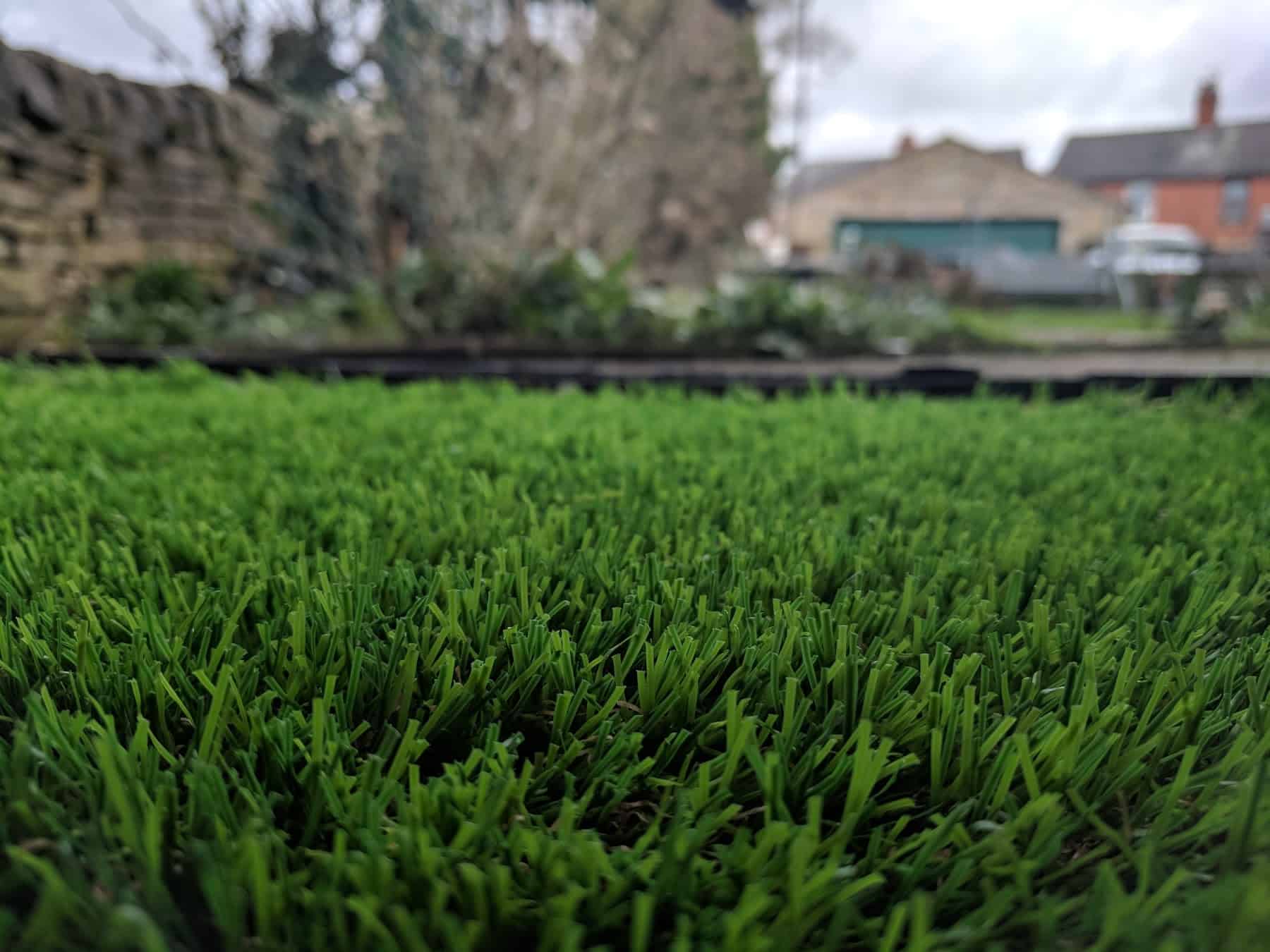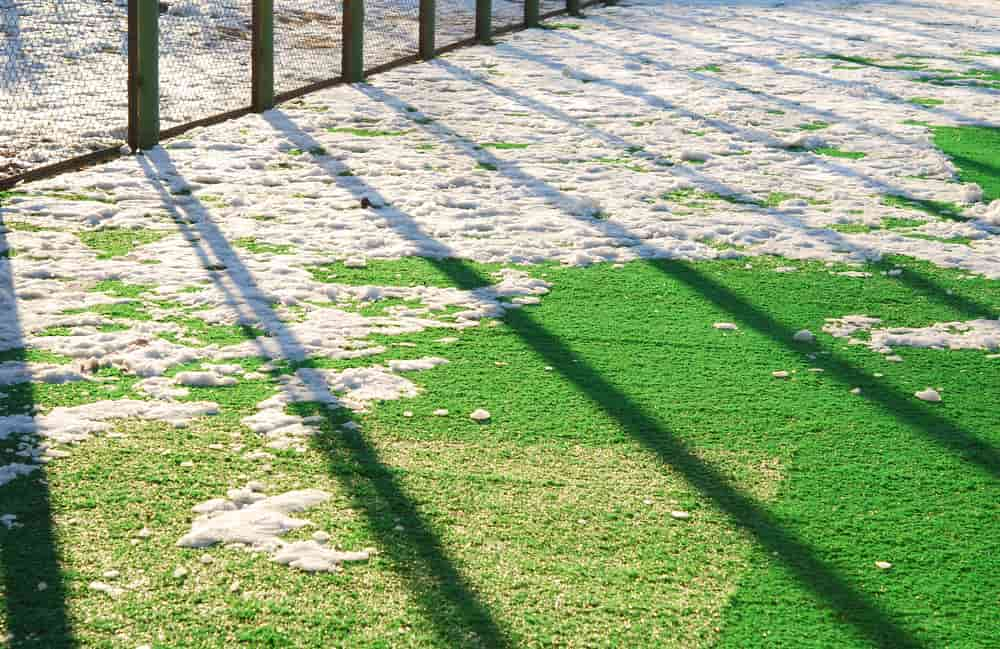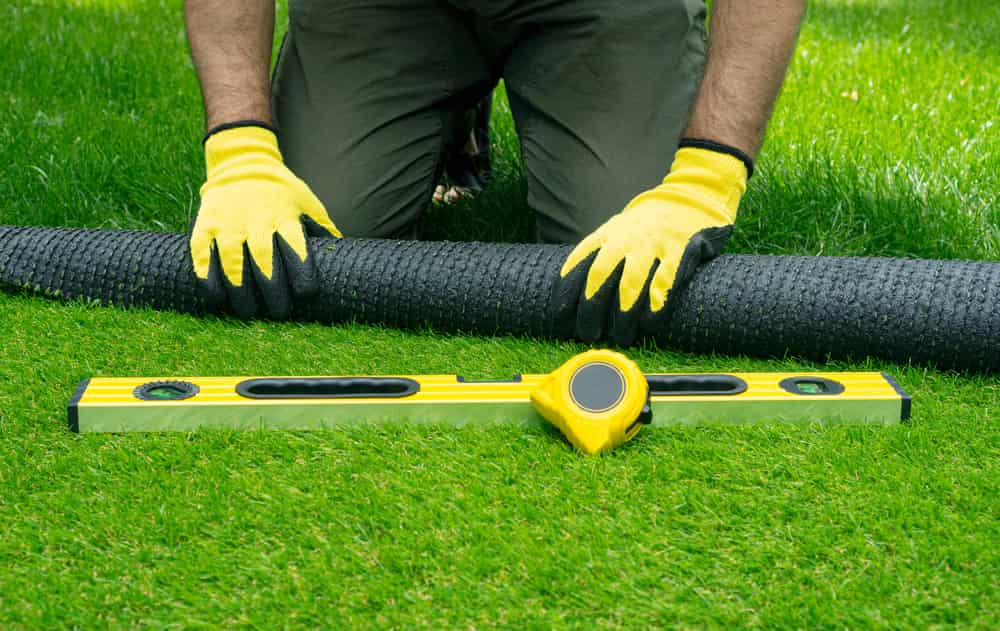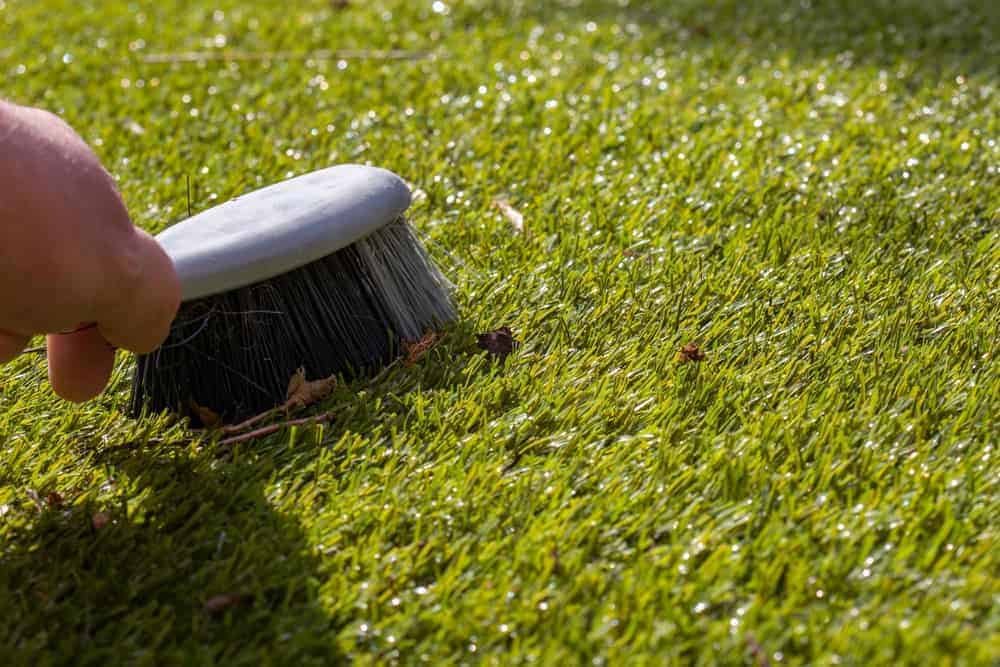6 min read
Last updated: November 5, 2024
Artificial grass has revolutionised the way we think about lawn maintenance, offering a year-round green solution without the endless mowing and watering. However, even the most durable synthetic turf isn’t immune to wear and tear.
Whether it’s an unfortunate cigarette burn, your dog’s enthusiastic digging, or natural wear patterns from heavy foot traffic, damage to artificial grass can be both unsightly and concerning. The good news? Most artificial grass damage can be repaired, often without calling in the professionals.
Understanding Your Artificial Grass
Before diving into repairs, it’s crucial to understand what you’re working with. Modern artificial grass is a sophisticated product consisting of several layers: backing material, synthetic grass fibres (usually polyethylene or nylon), and infill material. This layered construction is what gives artificial grass its realistic appearance and feel, but it also means that repairs need to address all these components for the best results.

Common Types of Damage You Might Encounter
Burns and Melting
One of the most common types of damage occurs from strong heat sources. Although artificial grass can sustain high temperatures in the summer, amber from a BBQ or a lit cigarette dropped by accident can quickly damage synthetic grass fibres. Small burns might appear as dark, crusty spots or areas where the grass fibres have fused together. For minor burns, you might get away with simply trimming the damaged fibres and brushing the surrounding area. However, larger burns will require a patch repair.
Tears and Rips
Active families, pets, and moving furniture can all cause tears in artificial grass. The severity of the tear will determine your repair approach. Small tears under six inches can often be repaired with seam tape and adhesive, while larger tears will require cutting out the damaged section and installing a replacement patch.

Let’s look at how to handle both scenarios:
For small tears:
Start by thoroughly cleaning the area around the tear. Any dirt or debris will prevent the adhesive from bonding properly. Next, gently lift the edges of the tear and apply seam tape underneath. Use a high-quality artificial grass adhesive on both sides of the tear, then press the edges together firmly. Weight the area down and allow it to cure for at least 24 hours.
For larger tears:
You’ll need to approach this more systematically. Begin by cutting out the damaged section in a clean rectangle – this makes it easier to fit your replacement piece. Cut your replacement piece slightly larger than the hole, then trim it to fit precisely. Place seam tape around the edges of the hole, apply adhesive, and carefully position your replacement piece. The key here is matching the direction of the grass fibres to ensure a seamless blend.
Matting and Flattening
Heavy foot traffic can cause artificial grass to flatten and mat down, particularly in high-use areas like pathways or under garden furniture. This is often exacerbated by insufficient infill or compacted infill material. The good news is that this type of damage is usually reversible without replacement.
Start by using a power broom or stiff brush to work against the grain of the grass fibres. This helps to lift them back to their upright position. You may need to add fresh infill material to provide adequate support for the fibers. Regular brushing can prevent matting from becoming a persistent problem.
Professional-Grade Repair Techniques
For more serious damage, you’ll want to employ professional-grade techniques. Here’s how the experts handle major repairs:
1. Surface Preparation
Begin by thoroughly cleaning the area around the damage. Any repairs will only be as good as the surface they’re applied to. Use a leaf blower or vacuum to remove debris, then clean with a mixture of mild detergent and water if necessary.
2. Cutting and Fitting
When replacing a section of artificial grass, always cut from the back using a sharp utility knife. This ensures cleaner edges and prevents damaging the surrounding grass fibres. Make your cuts precise and square – any irregularities will be visible in the finished repair.
3. Seaming and Bonding
Professional-grade seaming tape and adhesive are essential for lasting repairs. Apply seam tape along all edges of the repair area, ensuring it extends at least four inches beyond the repair on all sides. Use a two-part adhesive for the strongest bond, applying it evenly across the seam tape.
4. Finishing Touches
Once your repair is complete, pay attention to the finishing details. Brush the fibres to blend with the surrounding area, and add infill material to match the existing level. This helps to stabilise the fibres and create a consistent appearance across the entire surface.

Preventive Maintenance: The Key to Longevity
The best repair is the one you never have to make. Regular maintenance can prevent many common types of damage and extend the life of your artificial grass. Here’s what you should be doing:
Weekly Maintenance
Regular brushing helps prevent matting and maintains the upright position of grass fibres. Use a soft-bristled brush and work in different directions to prevent creating worn paths.
Monthly Checks
Inspect seams and edges for any signs of separation. Early intervention can prevent small issues from becoming major problems. Check infill levels and top up as needed – proper infill support is crucial for maintaining grass fibre structure.
Seasonal Care
Different seasons bring different challenges. In autumn, remove fallen leaves promptly to prevent decomposition on your artificial grass. During summer, watch for reflected sunlight that could cause heat damage. In winter, avoid allowing ice to form by ensuring proper drainage.

When to Call the Professionals
While many repairs can be handled DIY-style, some situations warrant professional intervention. Consider calling in the experts when:
– The damage affects a large area (more than 4 square feet)
– Multiple repairs are needed across your lawn
– You’re experiencing drainage issues
– The damage involves the sub-base
– Your artificial grass is still under warranty
Professional installation companies often offer repair services and can ensure the work is done to the highest standard, maintaining your warranty and the overall integrity of your artificial lawn.
Conclusion
Maintaining and repairing artificial grass doesn’t have to be daunting. With the right knowledge, tools, and techniques, most common types of damage can be effectively repaired, restoring your synthetic lawn to its former glory. Remember that prevention is always better than cure – regular maintenance and prompt attention to minor issues will help ensure your artificial grass continues to look beautiful for years to come.
Whether you’re tackling repairs yourself or calling in the professionals, understanding how artificial grass is constructed and what can go wrong is the first step to maintaining a perfect synthetic lawn. With proper care and timely repairs, your artificial grass can continue to provide that year-round green space you invested in, making it a worthwhile addition to any property.
Related Category: Installation & Maintenance
